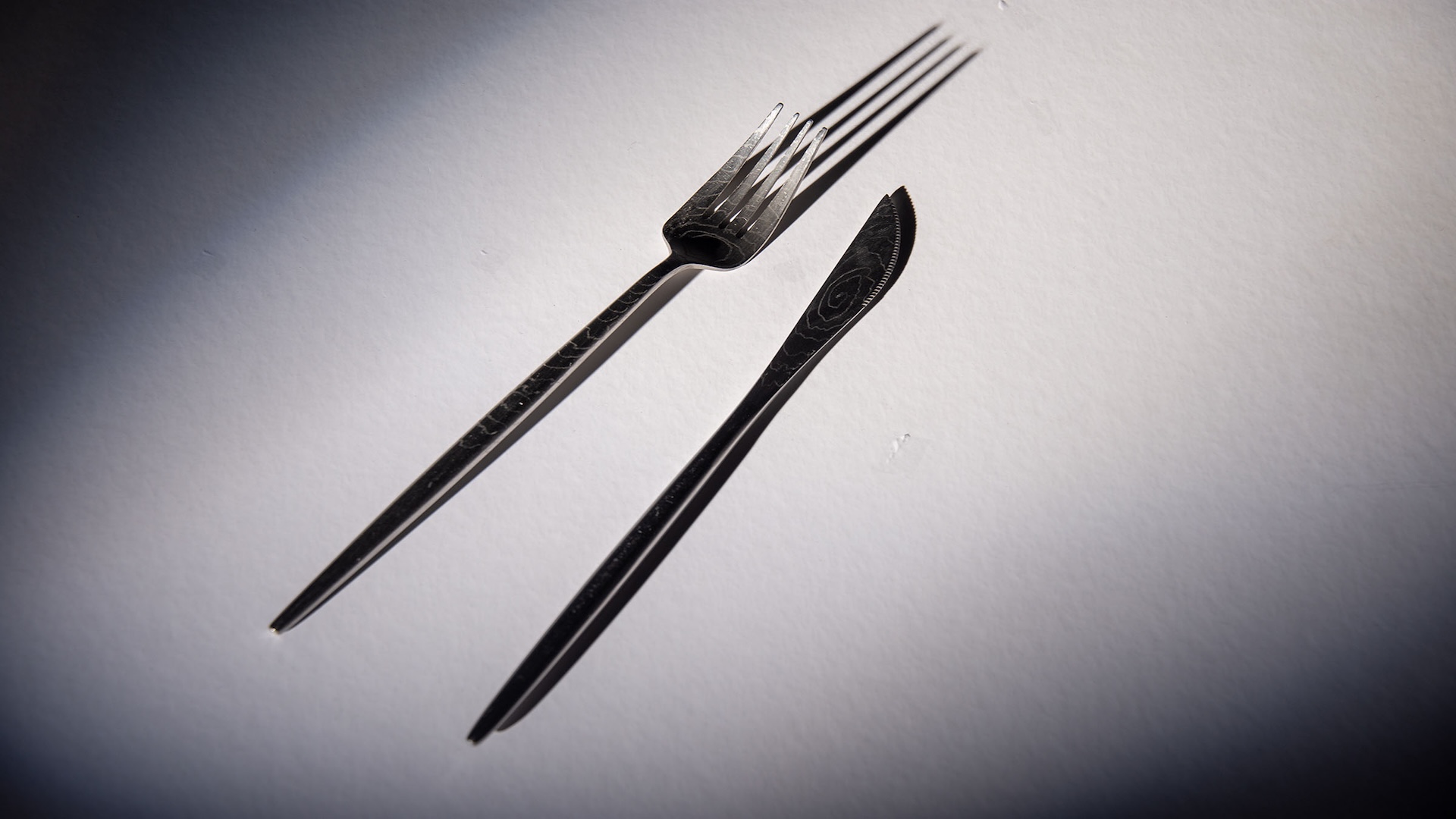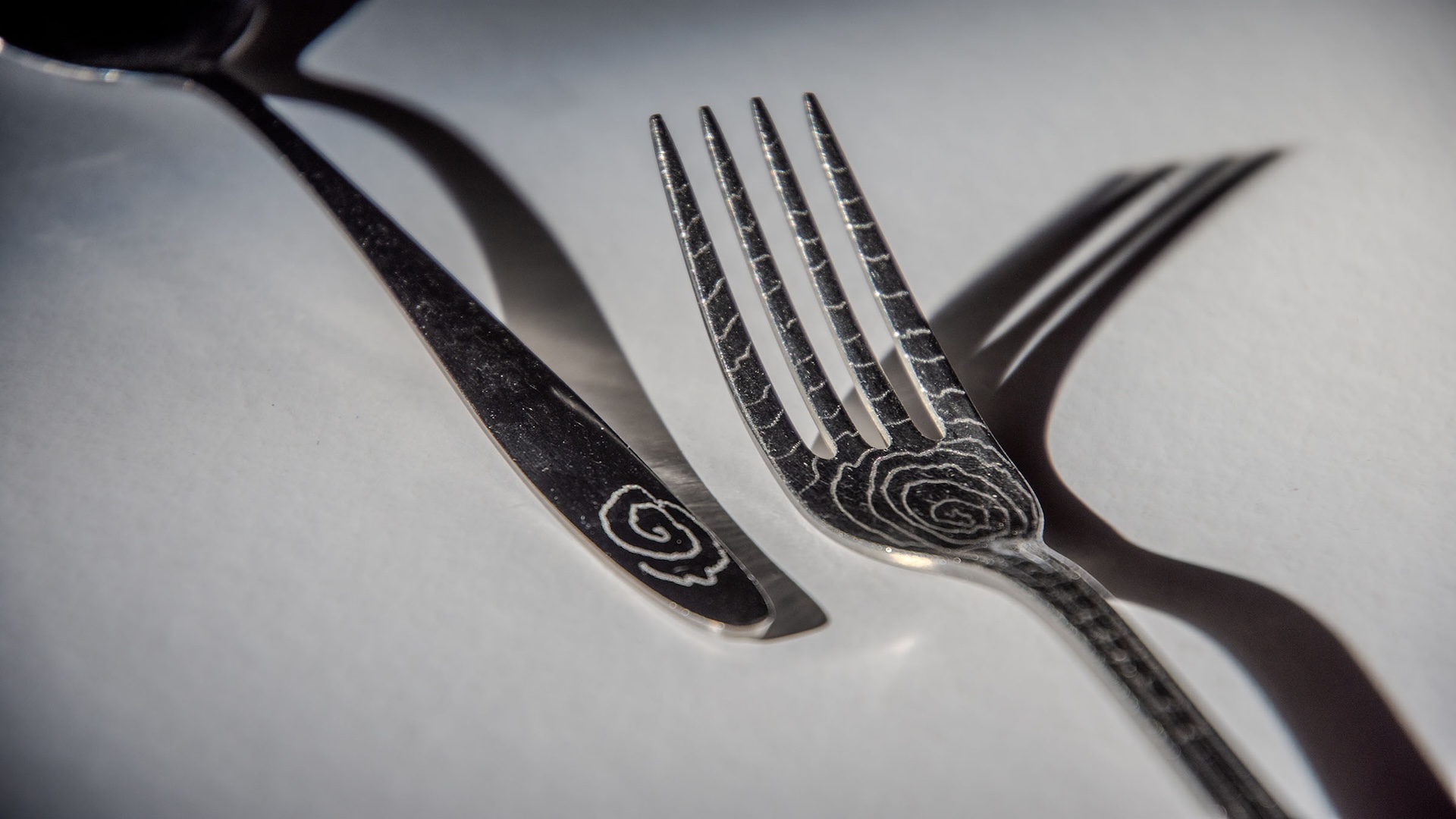↘
MALLEABILITY OF TIME AND SPACE
4000 Miles (3)
»If we want to examine the structure and quality of our life, we should turn to its time structures.« — Hartmut Rosa
Time is a multifaceted concept grounded in the the physical world and elevated by the symbolic and philosophical ideas of mankind. It is an observation as well as a construct and a commodity. It forms a horizon of understanding where elements can form meaningful relationships. Time can also serve as a lens for evaluating social qualities.
»Modernity is about the acceleration of time,« wrote Peter Conrad. In this context, the real-time of today’s data transmission is the result of a process that began with the invention of the clock. The fact that trading companies move their headquarters towards a server farm to be able to trade on the stock exchange a fraction of a tenth of a second faster than the competition shows that not even real-time is the same as real-time. The transmitters are accelerating: the vehicles – horse – railroad – airplane – telephone – Internet. The ranges are getting longer. Space got wiped out, and time got compressed. The concept of technical acceleration is omnipresent, as is its apparent counterpart, personal deceleration.
In science and economics in particular, time is measured with a precision that is imperceptible to the human sensorium and correspondingly difficult to grasp. The idea of a fraction of a tenth of a second has little to do with one’s sense of time. Or does it? Can one consciously fall out of time? Sol (the Martian day) is 39 minutes and 35 seconds longer than on Earth. Consequently, would we have ‘gained’ time on Mars? What quality does time hold for individuals, communities, and society?
Time is a multifaceted concept grounded in the the physical world and elevated by the symbolic and philosophical ideas of mankind. It is an observation as well as a construct and a commodity. It forms a horizon of understanding where elements can form meaningful relationships. Time can also serve as a lens for evaluating social qualities.
»Modernity is about the acceleration of time,« wrote Peter Conrad. In this context, the real-time of today’s data transmission is the result of a process that began with the invention of the clock. The fact that trading companies move their headquarters towards a server farm to be able to trade on the stock exchange a fraction of a tenth of a second faster than the competition shows that not even real-time is the same as real-time. The transmitters are accelerating: the vehicles – horse – railroad – airplane – telephone – Internet. The ranges are getting longer. Space got wiped out, and time got compressed. The concept of technical acceleration is omnipresent, as is its apparent counterpart, personal deceleration.
In science and economics in particular, time is measured with a precision that is imperceptible to the human sensorium and correspondingly difficult to grasp. The idea of a fraction of a tenth of a second has little to do with one’s sense of time. Or does it? Can one consciously fall out of time? Sol (the Martian day) is 39 minutes and 35 seconds longer than on Earth. Consequently, would we have ‘gained’ time on Mars? What quality does time hold for individuals, communities, and society?
4000 Miles has evolved into a third iteration; it is a continuing collaborative project between Prof. Sydney Craig ↗, Herron School of Art and Design in Indiana, USA, and Prof. Judith Glaser, Faculty of Design Würzburg (THWS), Bavaria, Germany. These educators are pursuing high-impact practices for engaged learning as they develop intercultural, multi-disciplinary exchanges meant to encourage and embrace a global mindset. Students from both universities has been challenged to explore the concepts of time and space through object studies and creative problemsolving as they work in teams across 4000 miles and through a variety of art and design media.
The project is part of the Virtual Global Learning Exchange (VGLE).
Summer Term 2025
The project is part of the Virtual Global Learning Exchange (VGLE).
Summer Term 2025
↘
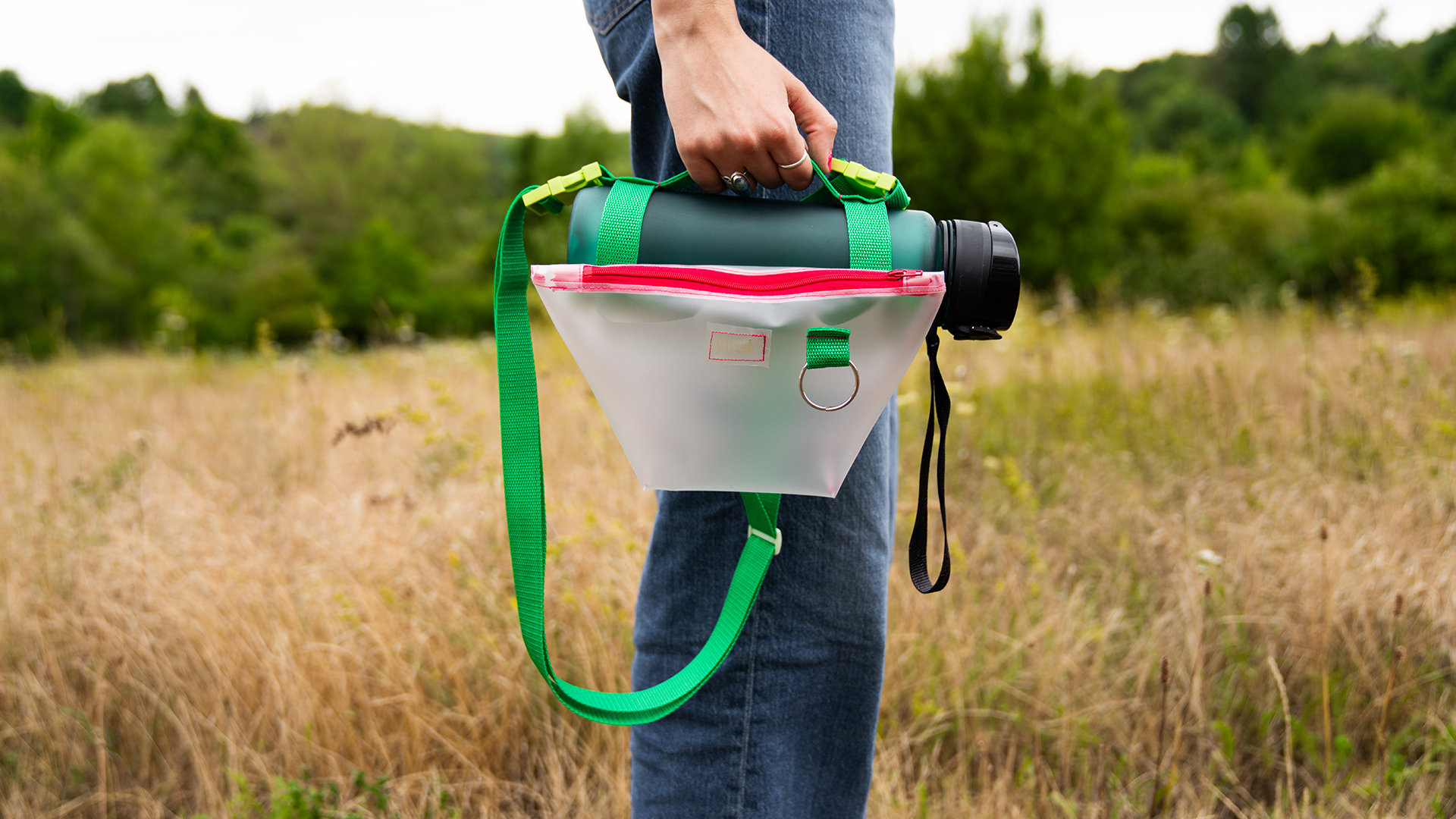
yaced.
Paulina Jouaux, Lauren McDonald, Rosemary Gomez
In a world that is constantly changing, we need products that grow with us. Under the motto »Change is the only constant,« yaced was created: a modular bag that is flexible, adaptable, and sustainable.
Straps, bag modules, and bottle holders can be removed, exchanged, or used separately. Further add-ons are planned, such as a removable wallet. This means that yaced can always be adapted to current needs.
Straps, bag modules, and bottle holders can be removed, exchanged, or used separately. Further add-ons are planned, such as a removable wallet. This means that yaced can always be adapted to current needs.
The material is intended to be particularly sustainable, which is why there are several samples of bioplastic that could be used as material for the bag.
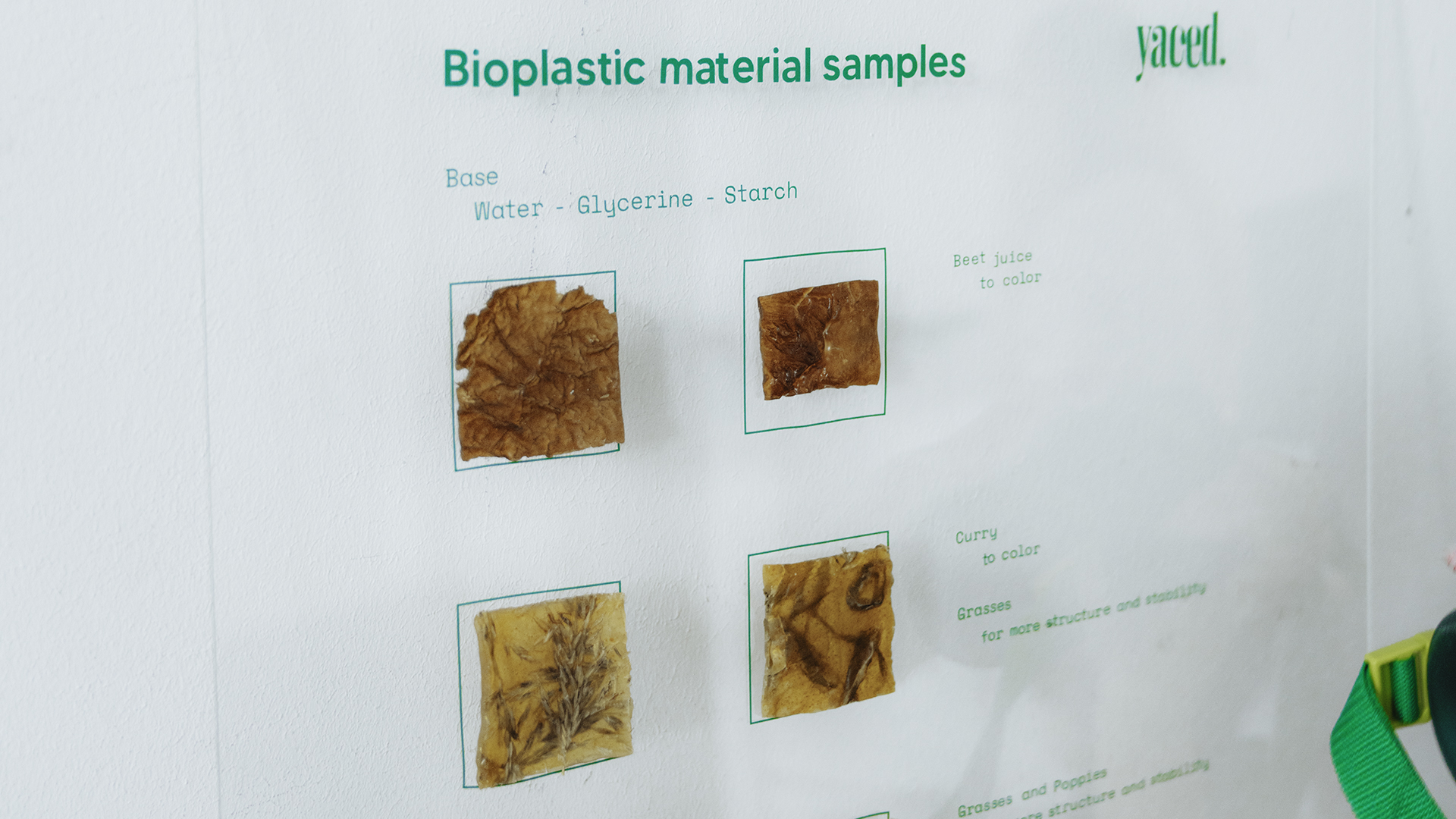

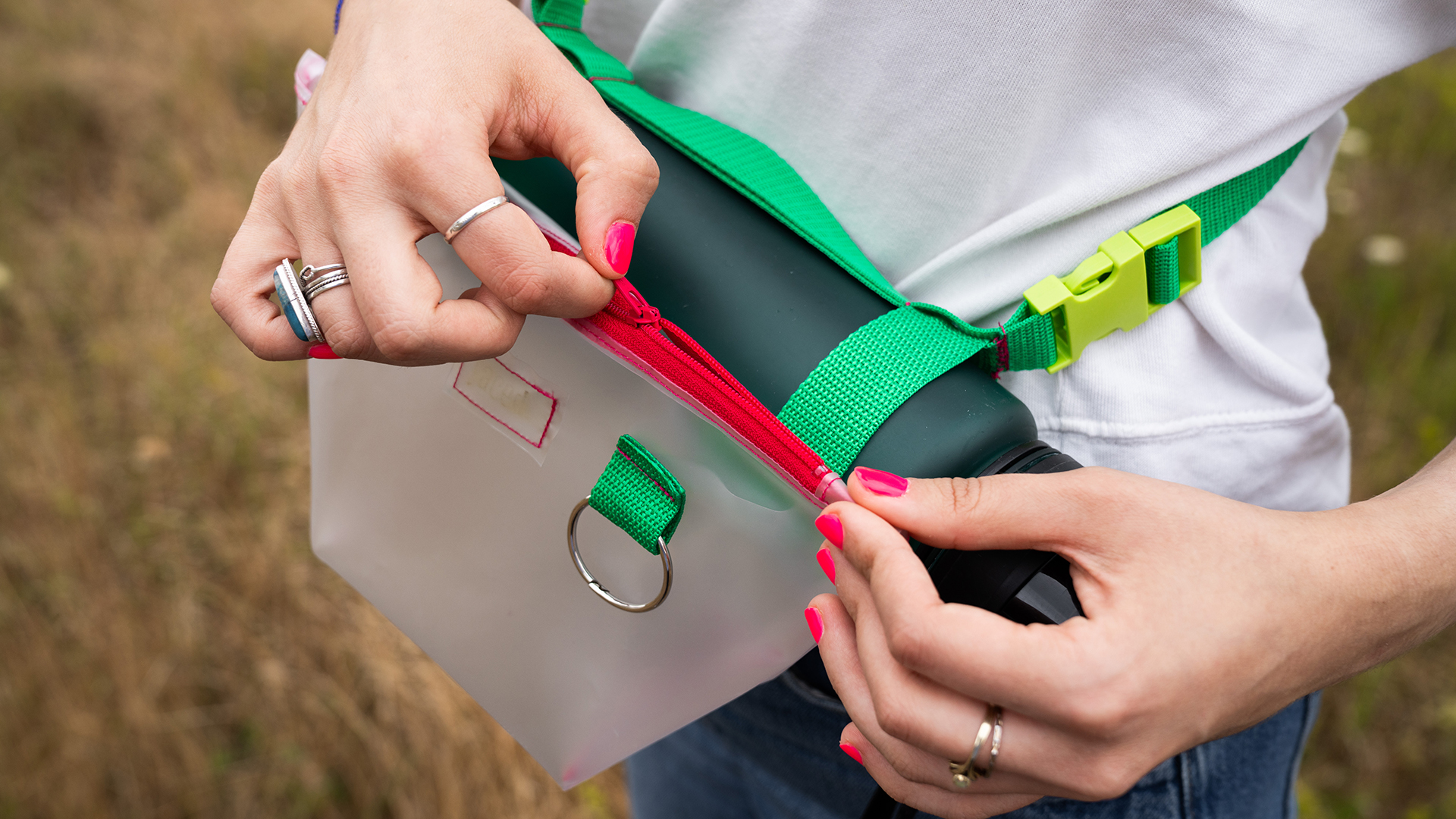

↘

Kinetic Joyride
Charlotte Andrews, Amelie Deimel, Ara Hillenberg
»[…] but when a beginning is made— when the felicities of rapid motion have
once been, though slightly, felt— it must be a very heavy set that does not ask
for more.« — Jane
Austen
The new makes itself known to all our senses. As environments shift, we adapt—sometimes fully, often incompletely. Change demands we let go of pieces of ourselves. In unfamiliar surroundings, we search for something unmoving when all else is in motion: a foothold, a constant. Some changes arrive like distortions, rotations, or even disfigurements. Objects move, transform, disappear, reappear. We carry them forward—or leave them behind. The idea for Kinetic Joyride emerged from the merry-go-round: a symbol of life's dizzying pace.
Our project is about change—how it touches the environment, how we respond, and how perception twists with speed.
The new makes itself known to all our senses. As environments shift, we adapt—sometimes fully, often incompletely. Change demands we let go of pieces of ourselves. In unfamiliar surroundings, we search for something unmoving when all else is in motion: a foothold, a constant. Some changes arrive like distortions, rotations, or even disfigurements. Objects move, transform, disappear, reappear. We carry them forward—or leave them behind. The idea for Kinetic Joyride emerged from the merry-go-round: a symbol of life's dizzying pace.
Our project is about change—how it touches the environment, how we respond, and how perception twists with speed.
Immersion in the process of adaptation can yield
a blurred, yet beautiful, image—a layered moment of reality and illusion.
It is a portrait of the joy of reinvention, shadowed by a quiet yearning for stillness. Embroideries capture fleeting memories—echoes of places where we felt alive, at ease. Places that offered stability, even as they, too, continue to change. Through arbitrary juxtapositions, an interwoven image forms—one that reflects a shared sense of immersion. A rotating pentagonal mirror frame allows the viewer to modulate the speed—or pause it entirely.
At the heart of Kinetic Joyride lies movement, fluidity, and a threefold dialogue: How do objects change when our surroundings change? And—do we move with them?
It is a portrait of the joy of reinvention, shadowed by a quiet yearning for stillness. Embroideries capture fleeting memories—echoes of places where we felt alive, at ease. Places that offered stability, even as they, too, continue to change. Through arbitrary juxtapositions, an interwoven image forms—one that reflects a shared sense of immersion. A rotating pentagonal mirror frame allows the viewer to modulate the speed—or pause it entirely.
At the heart of Kinetic Joyride lies movement, fluidity, and a threefold dialogue: How do objects change when our surroundings change? And—do we move with them?

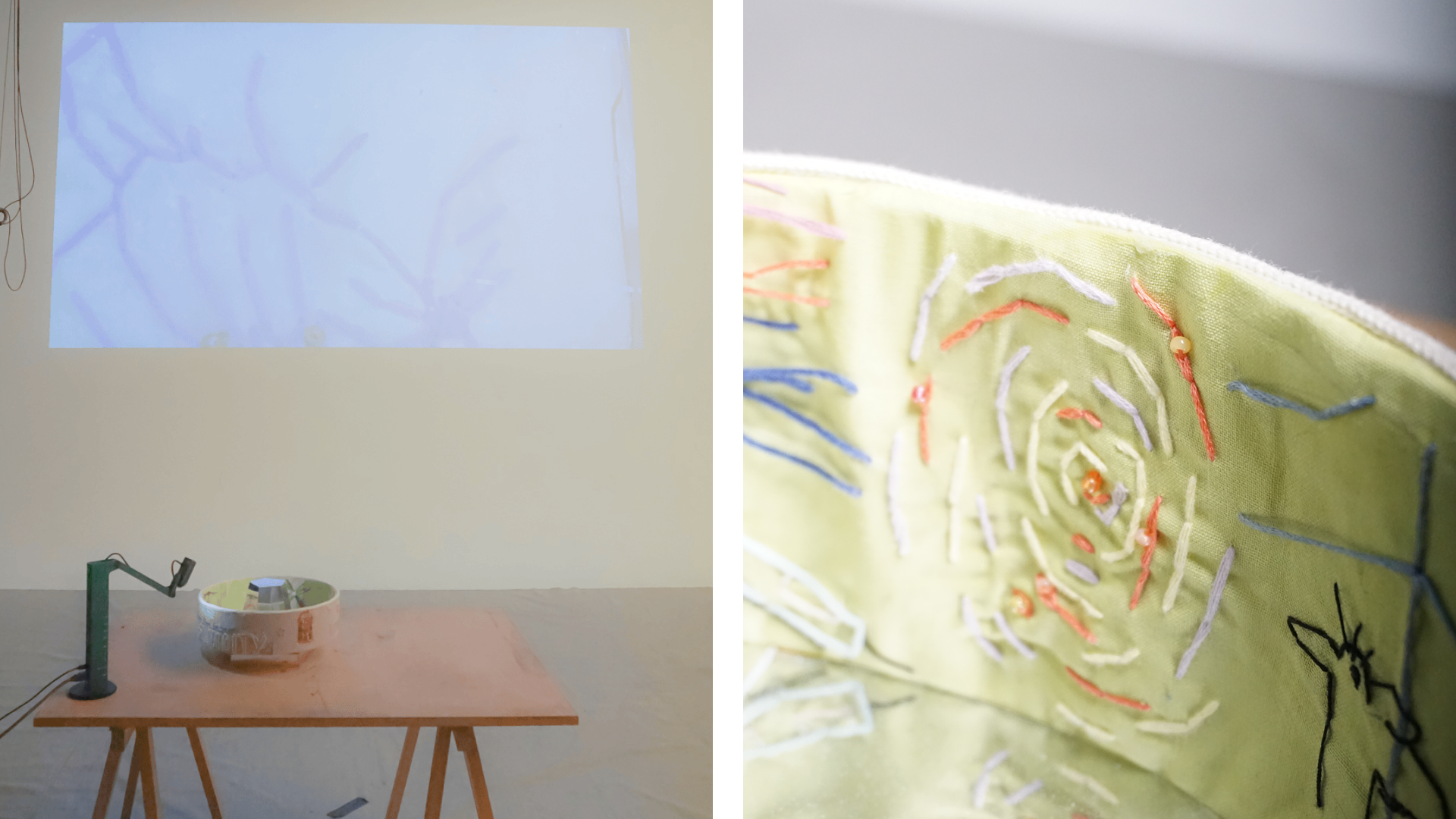
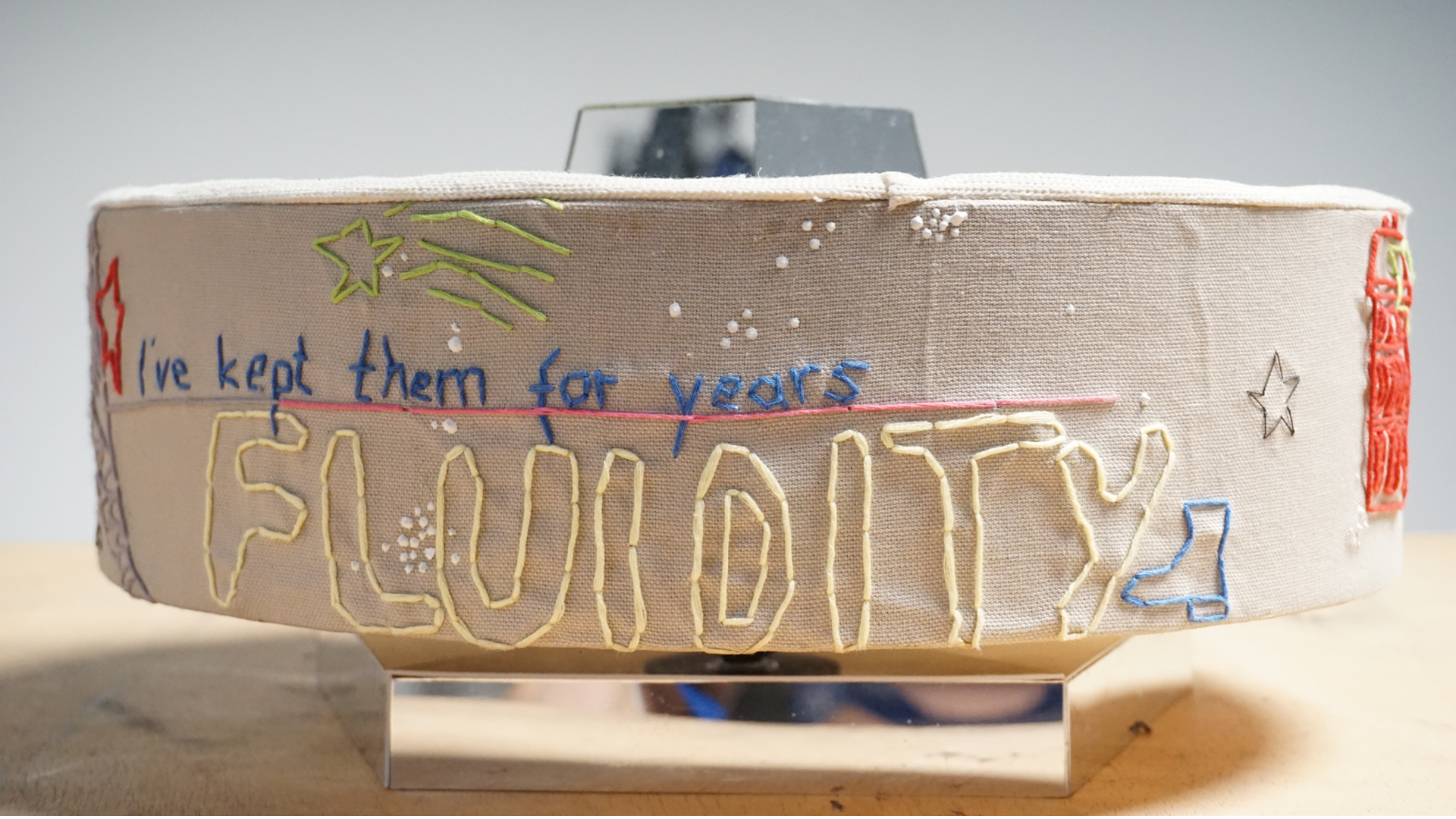
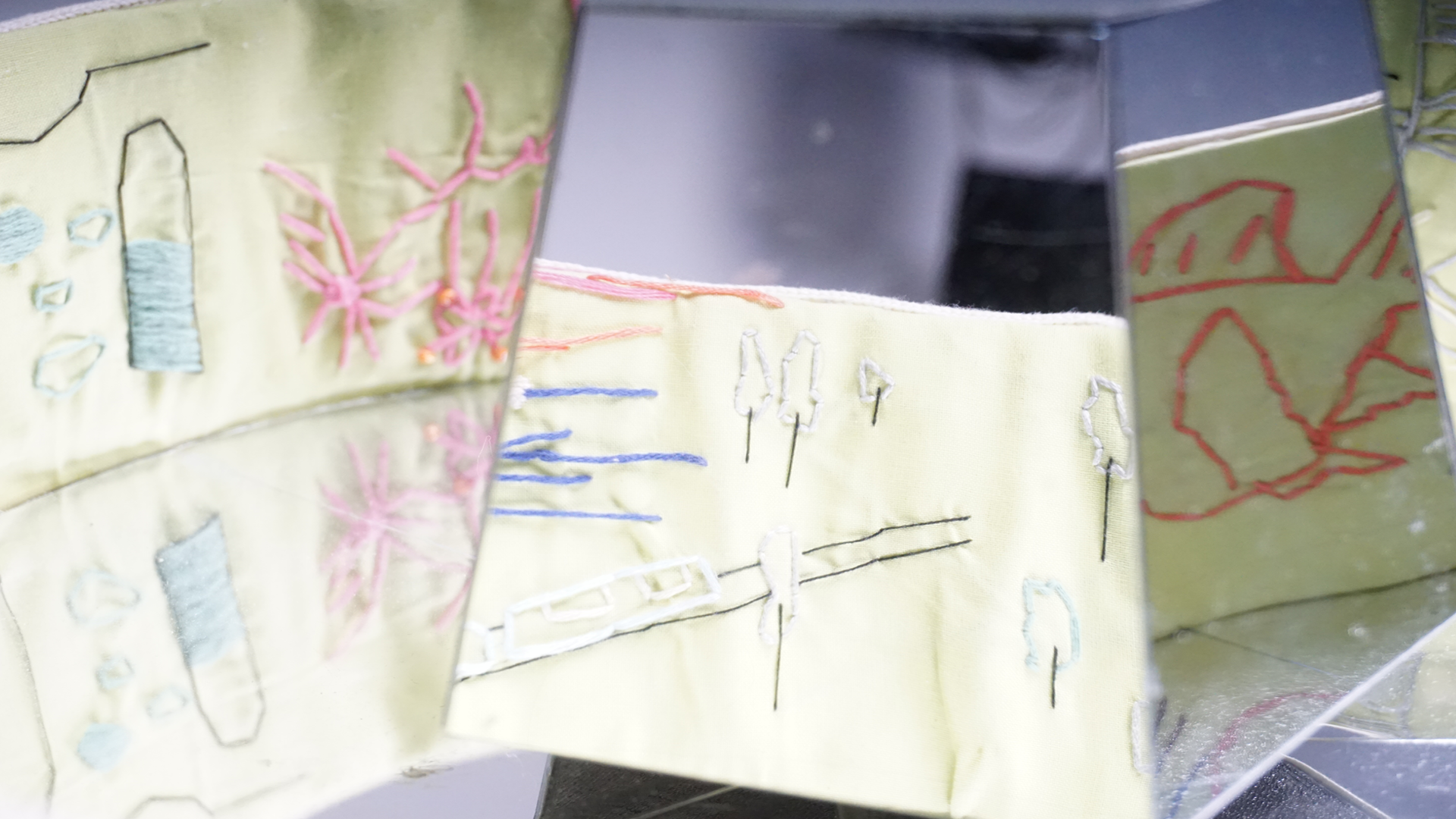
↘

Where
Childhood Hides
Anna Heilmann, Isabella Freshour, Jenny Monroy, Mia Griffith
This tent,
sewn from many individual pieces of fabric, holds a deeply personal archive:
each sheet carries several gel prints of childhood objects. From the outside,
the prints remain invisible. To truly see them, visitors must step inside, peek
through a sewn-in window, or even crawl in just like children exploring hidden
places.
Suspended in the center of the room, the tent invites quiet curiosity. Its minimal interior avoids distractions, leaving space for atmosphere, light, and reflection.
Suspended in the center of the room, the tent invites quiet curiosity. Its minimal interior avoids distractions, leaving space for atmosphere, light, and reflection.
More than just a shelter, it becomes a nostalgic vessel designed to
awaken memories, associations, and a sense of shared past.
By creating a space that must be physically entered, the project encourages visitors to connect with their own childhood and embark on a small journey through time.
By creating a space that must be physically entered, the project encourages visitors to connect with their own childhood and embark on a small journey through time.

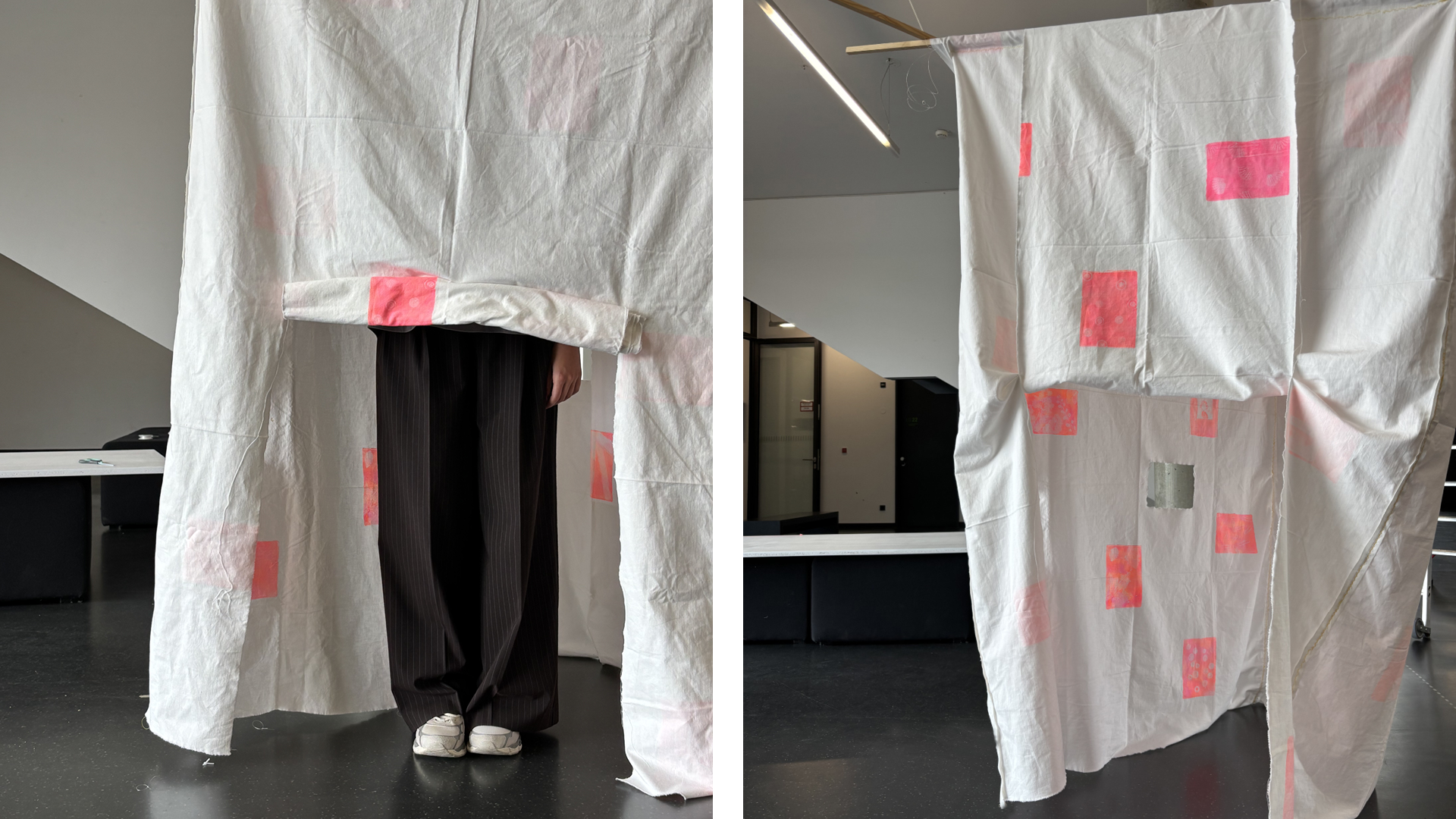
↘
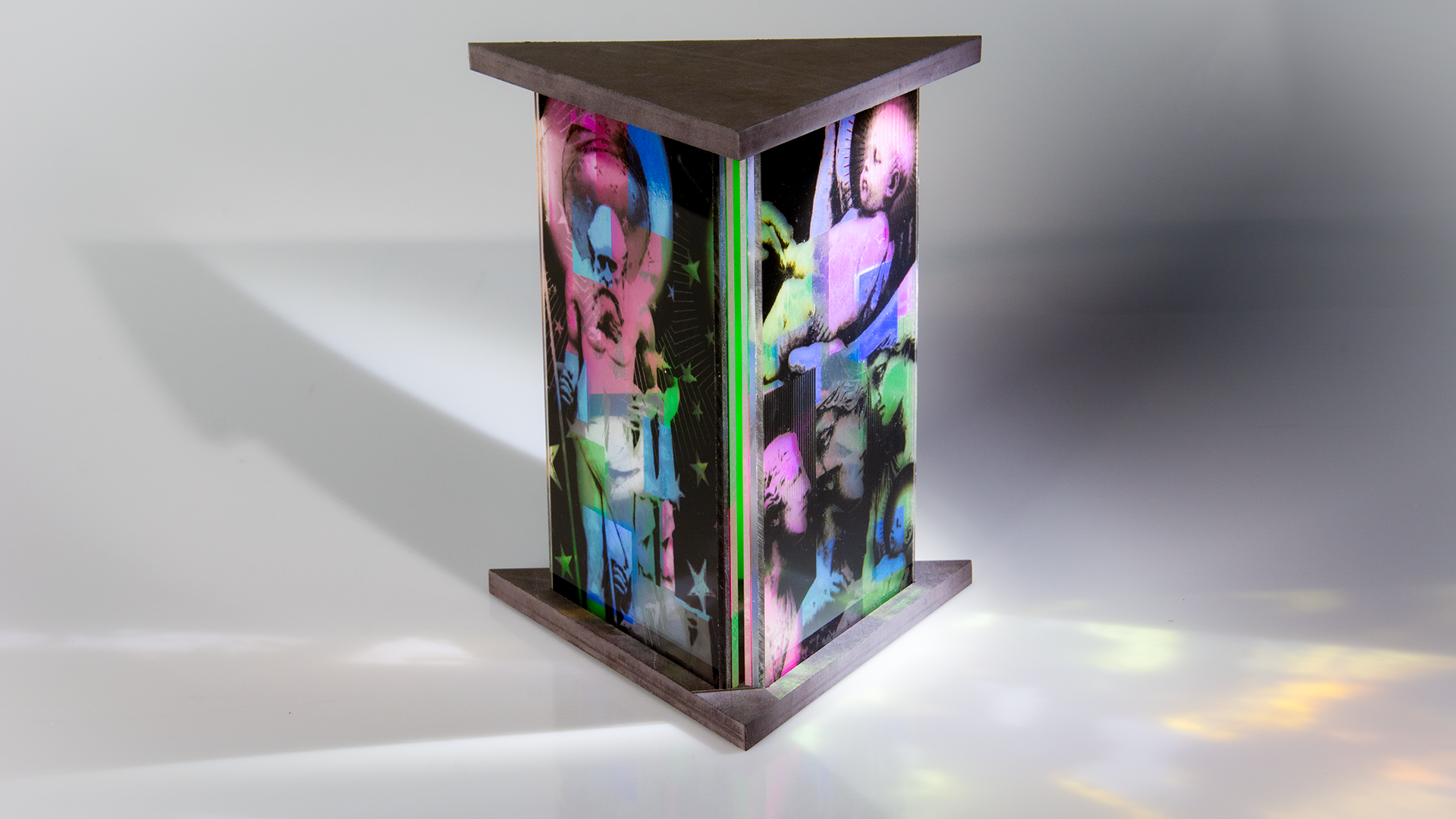
Prism of Fate
Amire Koncici, Piper Syester, Taylor Owen
The sculptural column tells the mythological concept of fate through three symbolic layers: Clotho in the birth of Erichthonius, Lachesis in Chronos, and Atropos in the fall of Icarus. Each layer of the column represents one of the three Moirai – the Greek goddesses of fate – and ties their function to a moment of mythological transformation: Clotho, the spinner of life’s thread, is embodied in the secretive and miraculous birth of Erichthonius, a figure born from earth and divine conflict. Lachesis, who measures the thread, is reflected in the abstract concept of Chronos – time as a force of order and duration. Finally, Atropos, who cuts the thread, appears in the fall of Icarus, symbolizing the inevitability of mortality and the limits of human ambition. Chromatic, mirror-like foil covers the surface of the sculpture, refracting light into constantly shifting colors. This visual element creates a changing experience depending on the viewer’s position and time of day, evoking the fragility, complexity, and changeability of fate.
The material's reflectivity invites self-perception and introspection, placing the viewer within the narrative and questioning their own relationship to time and destiny. The sculptural form itself draws on the visual language of both classical columns and modern abstraction. It intertwines linear storytelling with a cyclical understanding of time – a temporal paradox in which beginnings and endings dissolve into one another. The column does not simply tell a story; it performs the mythic structure of fate through light, form, and symbolism. In doing so, it becomes a vessel for timeless questions: How is life shaped? Where does agency end and destiny begin? And can we ever truly step outside the thread that binds us?
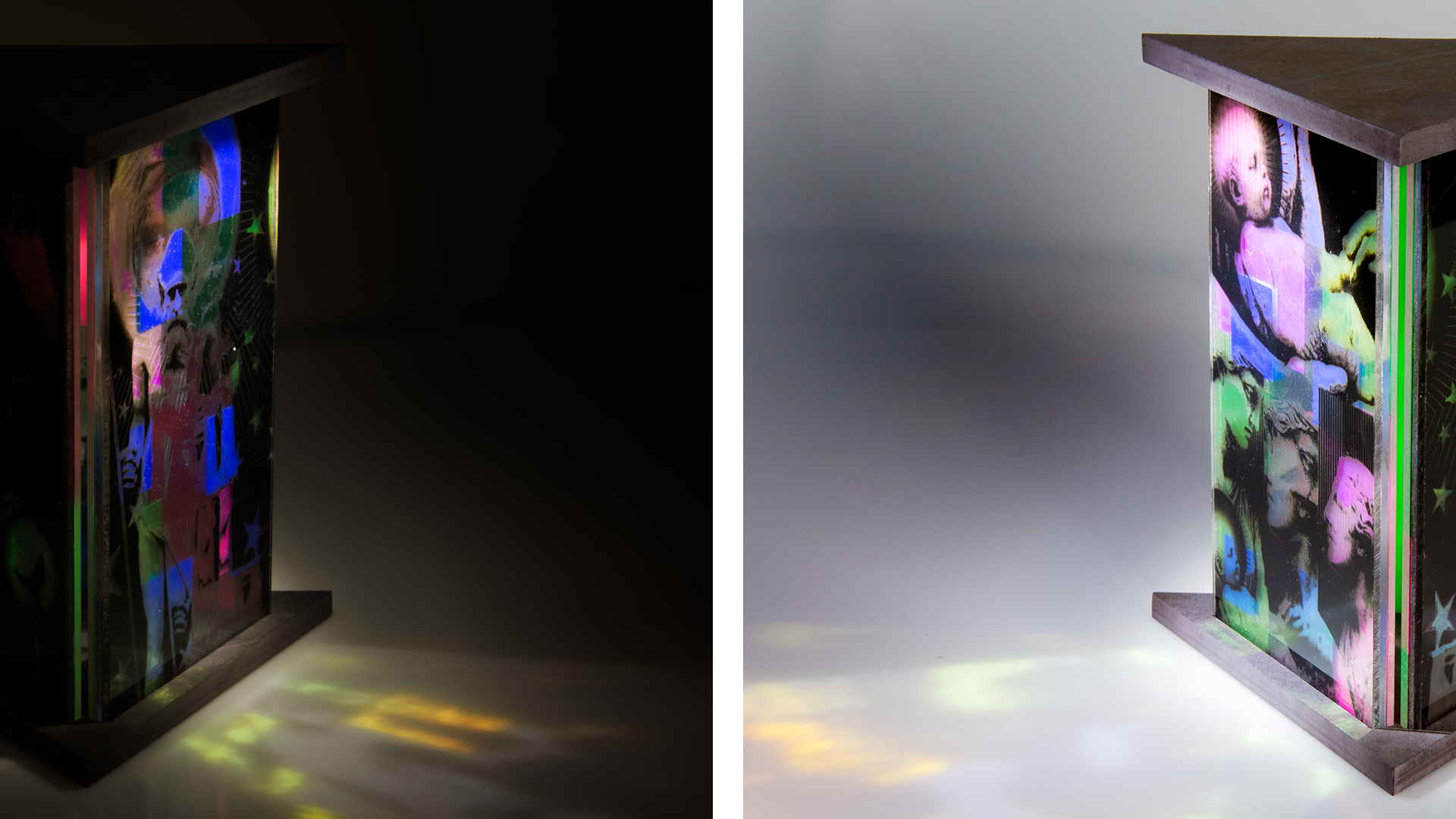
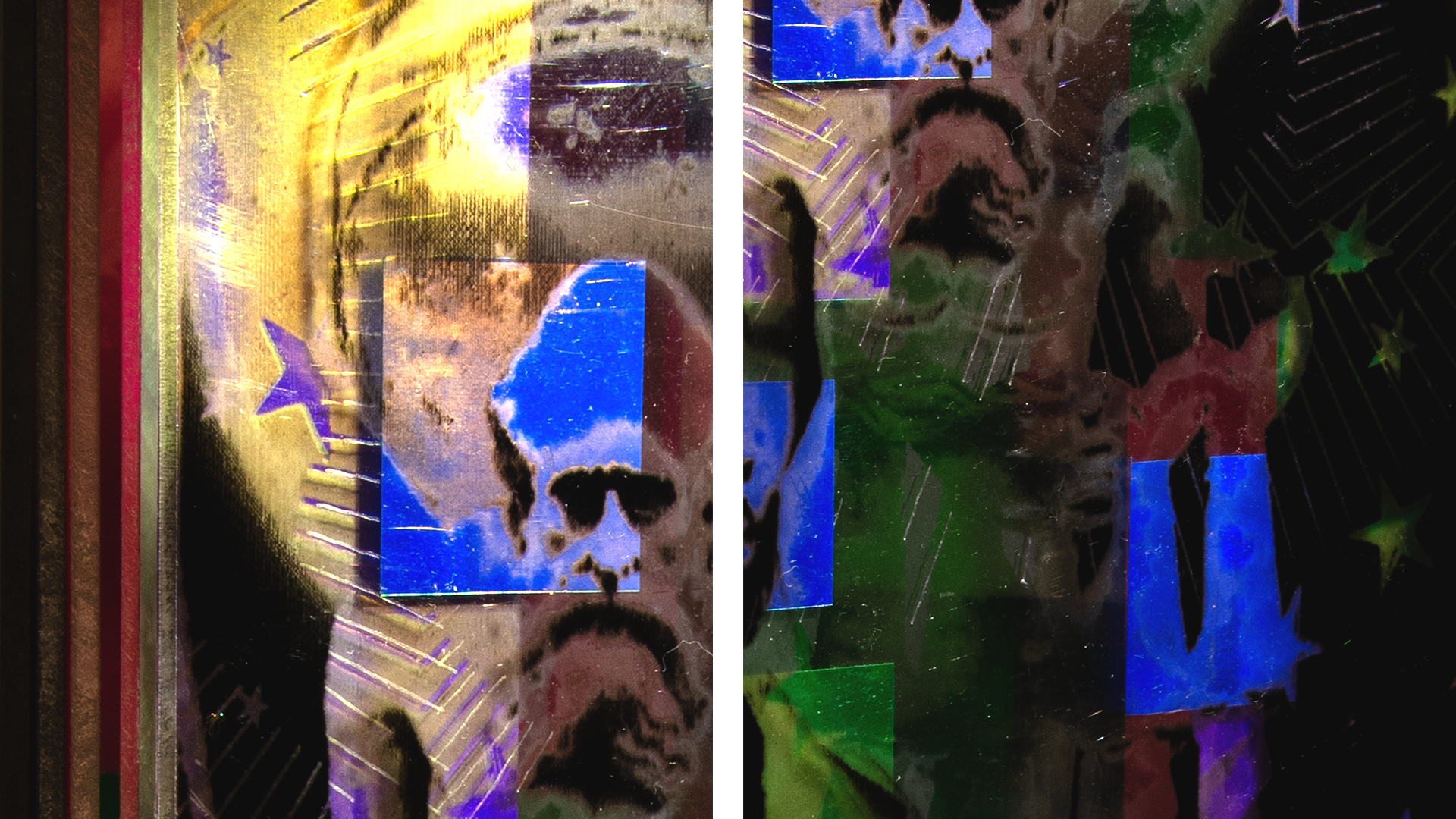
Time has absolute value. There is nothing more precious than time, and spending it with others is a privilege.
Spending Time is an interactive object that uses sand as a metaphor for time. The objective of this game is to spend as much time together as possible. An eccentric funnel at the top is filled with sand. By rotating the funnel using the grip ring, you and your friends can control where the sand flows. A balanced plate at the bottom collects the sand. Your objective is to keep this plate balanced for as long as possible by adjusting the sand's flow.
Spending Time is an interactive object that uses sand as a metaphor for time. The objective of this game is to spend as much time together as possible. An eccentric funnel at the top is filled with sand. By rotating the funnel using the grip ring, you and your friends can control where the sand flows. A balanced plate at the bottom collects the sand. Your objective is to keep this plate balanced for as long as possible by adjusting the sand's flow.
If the plate tips over, you can try to restore the balance or end the game. Spending time together is not just a side effect of the game, it is the objective itself. Spending Time wants you to appreciate the time people spend with you and to offer your time to others.
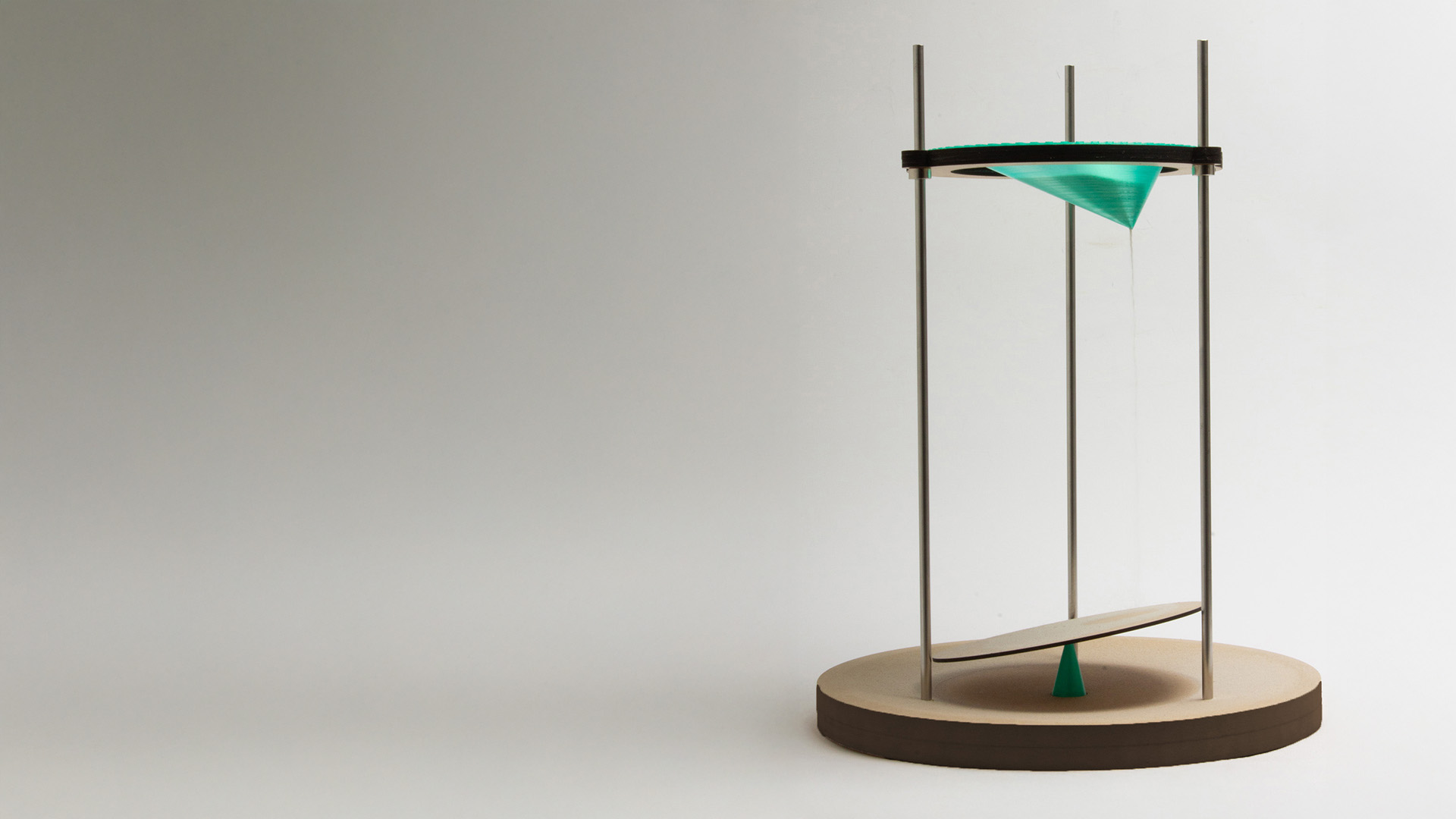


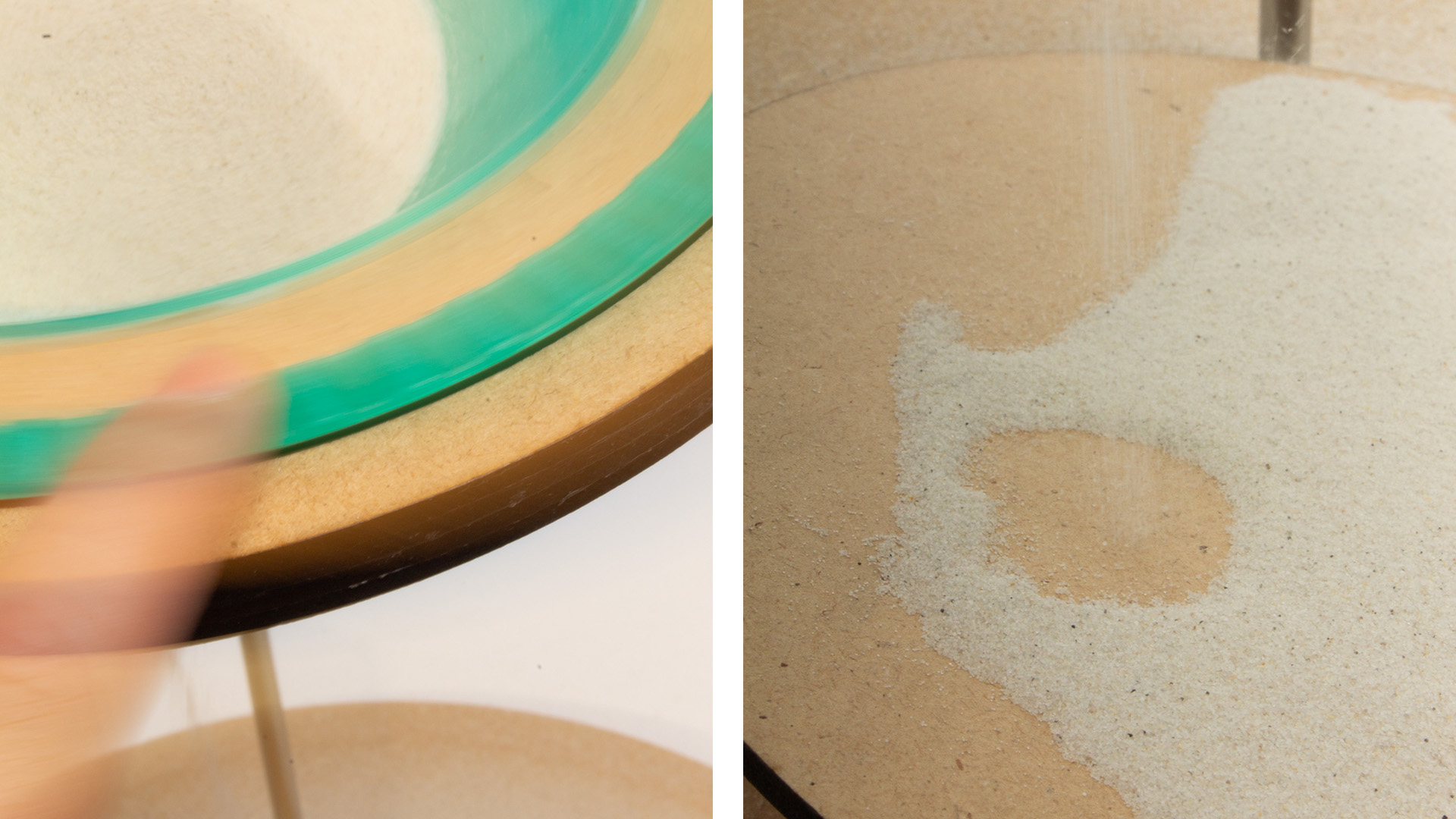
↘
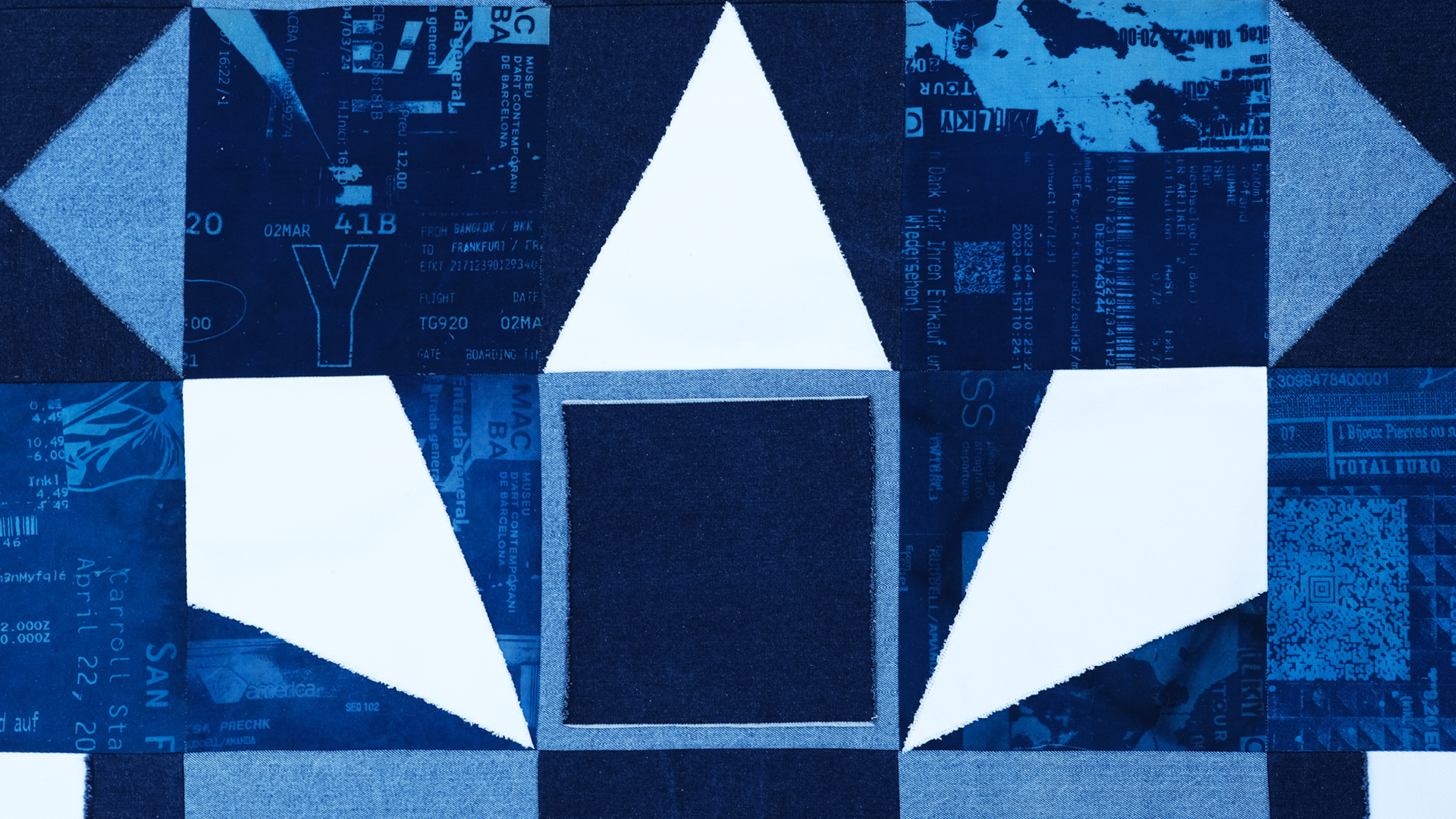
Fleeting Moments
Sarah Hannemann, Mandy Rudel, Dani Frye, Kell
Toles
We worked with concepts relating to time and
space. These terms stood in contrast to each other. Their abstraction created a
kind of pattern that was brought together in a large-format tablecloth.
This carpet is complemented by cyanotypes, which also capture the theme
of time and space. Collected everyday objects such as tickets, receipts or
admission tickets are visible on the cyanotypes - traces of places where we
have actually been. These objects document specific moments and refer to our
personal movement through space and time. It is about capturing fleeting things
and transient memories - transforming them into something permanent.


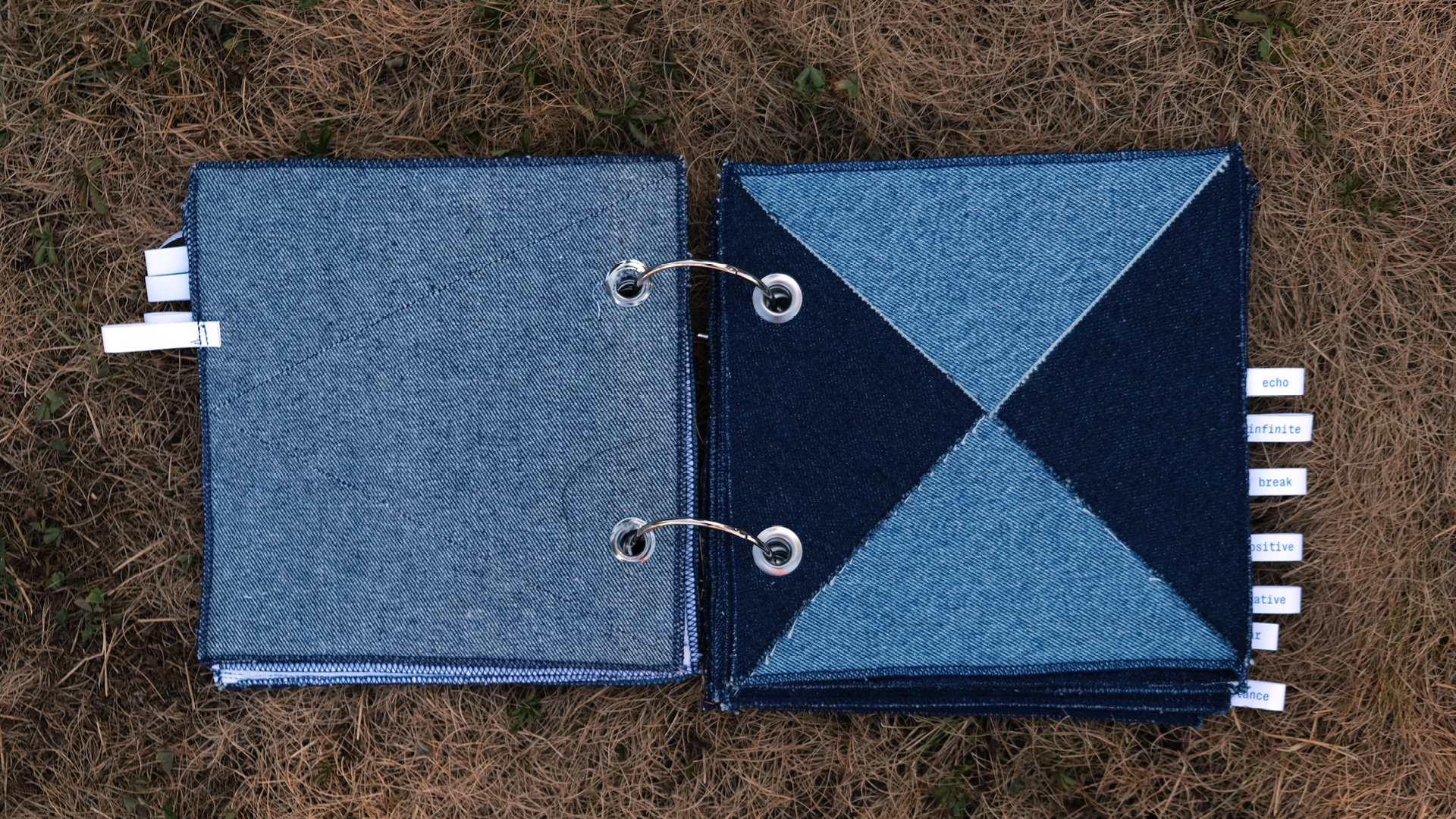

↘
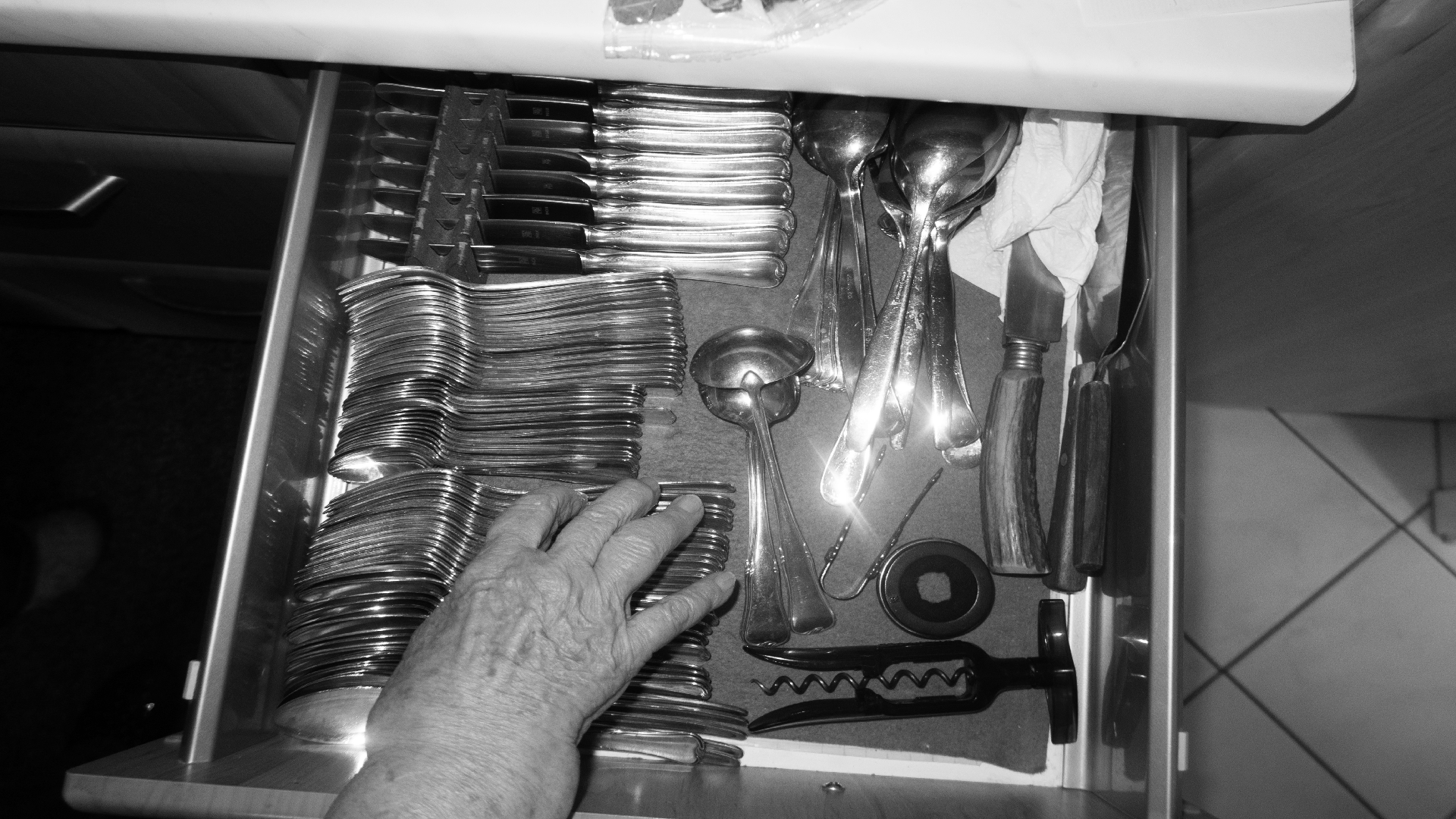
vom nehmen und vom geben
Liliane Sand, Lance Milam, Aaliyah Pipes
This project is a poetic exploration of the invisible relationships that shape our existence between past and future, self and other, memory and possibility. This exchange, subtle yet ever-present, does not follow a linear path. It unfolds like a conversation: nonlinear, layered, and alive. It is a cycle of receiving and offering, of learning and letting go, of transformation across time. At the heart of the project lies the spiral, a symbol as ancient as it is universal. It speaks of growth and continuity, of motion without end, of beginnings that emerge from endings.
The spiral becomes the visual and conceptual core of the work, capturing the quiet rhythm of change.To give this idea tangible form, the project turns to the most familiar of objects: cutlery. Forks, knives, and spoons, tools we touch daily, often without thought, are transformed into vessels of meaning. They become carriers of memory, gestures of care, and symbols of shared experience. The spiral is embedded into each object, not merely as ornament, but as an invocation: a reminder of our place in the ongoing flow of giving and receiving.
The spiral becomes the visual and conceptual core of the work, capturing the quiet rhythm of change.To give this idea tangible form, the project turns to the most familiar of objects: cutlery. Forks, knives, and spoons, tools we touch daily, often without thought, are transformed into vessels of meaning. They become carriers of memory, gestures of care, and symbols of shared experience. The spiral is embedded into each object, not merely as ornament, but as an invocation: a reminder of our place in the ongoing flow of giving and receiving.
This project raises questions about how we relate to the things we use and to the world we shape through them. It invites us to consider responsibility: not just for what we take, but for how we give back. It suggests that design is not only a matter of function or aesthetics, but of values, relationships, and intention. Each object becomes a touchpoint in a larger conversation, about memory, continuity, and the ways in which we leave traces in the world.
Ultimately, vom nehmen und vom geben speaks to the profound truth that we are all part of a larger process: one that is dynamic, porous, and interdependent. In everything we do, we inherit, we alter, we pass on. So in this endless spiral of exchange: what does it mean to truly give? What do we carry forward, knowingly or not? And what remains of us in the hands of others, long after we are gone?
Ultimately, vom nehmen und vom geben speaks to the profound truth that we are all part of a larger process: one that is dynamic, porous, and interdependent. In everything we do, we inherit, we alter, we pass on. So in this endless spiral of exchange: what does it mean to truly give? What do we carry forward, knowingly or not? And what remains of us in the hands of others, long after we are gone?
